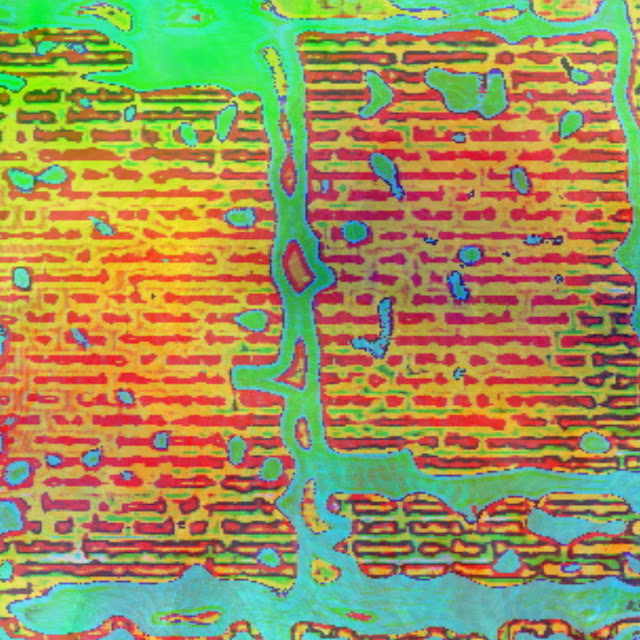Thursday, December 31, 2020
ornate / EZE, 2020
Monday, December 28, 2020
Sunday, December 27, 2020
Tuesday, December 15, 2020
Poetry Makes Things Happen by Jim Leftwich
For
Jim Leftwich, the boundary between poetry and criticism, or more accurately,
between poetry and writing about poetry, is extremely porous. This book should
make that very clear; in fact, here it is sometimes hard to tell whether a text
is “original poetry” or his writing “about poetry”. Which suggests that the
distinction may not be all that important. (Another such book is one he wrote
focused on my own work, or using my work as a springboard, Containers
Projecting Multitudes: Expositions on the Poetry of John M. Bennett, 2019.)
This is perhaps an outgrowth of his practice of making “hacks” of others'
poetry and texts, which is in itself a means of entering into, and remaking
aspects of, another's work, using a wide variety of processes ranging from the
arbitrary and deliberate, to the improvisational and purely intuitive. What
this does is to turn the process of writing about poetry on its head. Instead
of applying a preordained critical method or theory to a text, Leftwich
presents, as it were in “real time”, an account of what it was like, of what
happened, when he read the text. We thus have a narration of a real experience
of reading. For me, and for many of us in this new literary avant garde, this is
vastly more interesting and useful than the use of a text to support or
illustrate a particular literary (or other) ideology. Leftwich's work in this
regard is unique, exciting, and represents real progress in the “problem” of
“how to read poetry”, and of how to write it as well. -¬ John M. Bennett
Sunday, December 13, 2020
Asemics in Popular Culture: SNL on the Aesthetics of Meaning ... / EZE, 2020
Art can be a protest against convention, but art also defines its own conventions just as it is defined by convention. Does art escape convention? Asemics, as art, certainly has its own conventions. But what happens when asemics operates as a means to unground a convention? Does the ensuing criticism move into the circuit of State and Nomad as defined by Deleuze and Guattari?
The "XXL Rap Roundtable" skit from Saturday Night Live (December 12, 2020) makes a point of posing an asemic performance in a genre against the genre itself. How does asemics operate socially, politically, culturally, and artistically? Asemics here can be taken to be non-sense, i.e. words, utterances, songs, ... without [apparent or shared] meaning. [Note that semantics can be, but need not be, invoked here.]
And is the point at which performance within a genre establishes itself as contrary to convention, i.e. as not [presently] defined by that genre, a type of asemics as it disrupts the mode of meaning offered by the genre? Or do we need another term other than asemic performance for this use of non-sense?
SNL's XXL Rap Roundtable: Pop Culture Asemics
To what end is asemics as non-sense, as an empty placeholder of the formal, as disruption a method?
Thursday, December 10, 2020
Xu Bing: Mixing Media on the Way to Making Asemics: Xu Bing / EZE, 2020
Consider asemics as a form of mixed media. Consider the work of Xu Bing.
Sunday, December 6, 2020
styrofoam word / EZE, 2020
Monday, November 30, 2020
Post-Asemic Press: Shapes by Tim Gaze is available now at Bandcamp! A...
Saturday, November 28, 2020
crazy train / EZE, 2020
Monday, November 23, 2020
lin ack / EZE, 2020
Sunday, November 15, 2020
square pulse / EZE, 2020
Saturday, November 14, 2020
Thursday, November 12, 2020
wReN by Jim Leftwich and Jeff Crouch / EZE, 2020
che che
wratch
che che
wratch wratch
che
che
che che
were wren
churr chatter
che che
churr
September
che
churr churr
churr
movies
by
churr
che che
gobbling
pish pish
gobble
churr
gatch
furrowed
furious
churr
che che
wratch wratch
che che
Wednesday, November 11, 2020
toad orchestra with calligraphy by Jim Leftwich and Jeff Crouch / EZE, 2020
so
it goes
so
goes
the
toes
of
the toad
to
and fro
and then the so
is the toe
until
you say
I told you
so
so just don't
croak
just don't
so
keep writing like crazy
exchanging
changes
so it goes
so goes
the toes
of the toad
to and fro
to and fro
the woodwinds and the brass
are
amazing
Sunday, November 8, 2020
myopia, the alphabet soup of the well-defined suddenly un (with Cece Chapman) / EZE, 2020
from Cece Chapman: "out those maps too...especially interesting because of the myopic artists that are never mentioned...but i read a long time ago that monks became monks because of their myopia. that priestesses also in ancient egypt and greece, the most nearsighted the more inbred, the more valuable because they could barely see. their prophecies were valued more as they were less influenced by who was before them asking questions because they couldn't see them. and blind priests and priestesses more valuable...also i had heard the same that the very young being trained by renaissance artists drew detail (like maps and bibles ordered by the rich) to train but as they grew older lost the ability to stay focused and draw detail but was probably their eyes changing. maybe you know what a rapidograph pen is with various points some very tiny used in graphic design. but when i was in school at 16-18 the artist kids used to draw psychedelic designs, and very small details, but later admitted at mid twenties they just couldn't do it anymore."
Saturday, November 7, 2020
Friday, November 6, 2020
vegetable book / EZE, 2020
Tuesday, November 3, 2020
Notes on Indifferent Text / Jim Leftwich and Jeff Crouch, 2020

















































